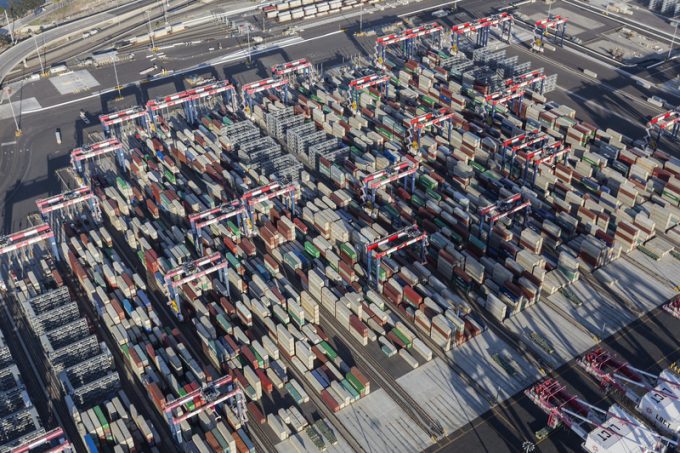News Podcast | Apr 2024 | Middle East erupts, Dali general average, IATA CNS ‘live’ and forwarders hit back
In this episode, host Mike King and guests examine what the latest escalation of conflict in ...

As shipping’s port congestion crisis widens, tech-players are hoping to capitalise on calls for improved visibility across container supply chains.
SeaIntelligence’s Lars Jensen noted the lack of any real-time overview of global bottlenecks, as pockets of congestion spring up from Auckland to Singapore to Los Angeles.
“Instead, it is drip-wise in terms of each individual port,” he explained. “Sometimes you can only get the info from a carrier calling at the port/terminal, whereas the port provides no info. Other times it is the reverse, and at times it is neither.”
Indeed, last week The Loadstar reported on Drewry’s analysis of the congestion. This suggested better visibility of port capacity and productivity would allow for earlier cargo re-routing and schedule adjustments. And the consultant said it was developing a port efficiency monitoring service which would provide early indication of potential yard congestion.
Likewise, visibility platform Project44 noted how the industry’s congestion woes were making headlines in the financial press, for example, when Nike reported its North America revenues were down 11%, due to shipment delays of over three weeks.
Project44 said its recent acquisition of data-provider Ocean Insights would allow it to to help importers manage intermodal connectivity at congested gateways, and the company recently launched Port Intel, an online service that provides subscribers with summaries of congestion at specific ports.
Other tech-players are tackling the gridlock with improved communication and planning tools for carriers and terminal operators. Portchain, for example, provides AI-powered cloud-based solutions for berth utilisation and fleet planning.
Thor Thorup, Portchain’s CCO, told The Loadstar increased information on berthing capacity enabled carriers to increase their planning horizon and identify schedule disruptions earlier, which gives time to make proactive decisions.
“Conversely, when carriers share more accurate arrival times and move counts to terminals, terminals are able to optimise their berth and crane utilisation better, so they don’t need to make last-minute adjustments,” he added.
Portchain already boasts Hapag-Lloyd and the port of Tanjung Pelepas as customers, and recently added Russia’s Global Ports.
“Using Portchain, Global Ports’ customers will be able to track information about schedules, vessel arrivals and handling, including berth numbers and the start and end of cargo operations, all in real time,” Mr Thorup explained.
Furthermore, he said, as well as providing visibility on berth capacity and arrival times, predicting missing or inaccurate information through machine learning, and better planning decisions through AI optimisation could also help to reduce congestion.
“It is surprisingly quick to implement these three areas in operations, and we are able to bring a terminal fully live with Portchain in four to six weeks,” he added.
Comment on this article